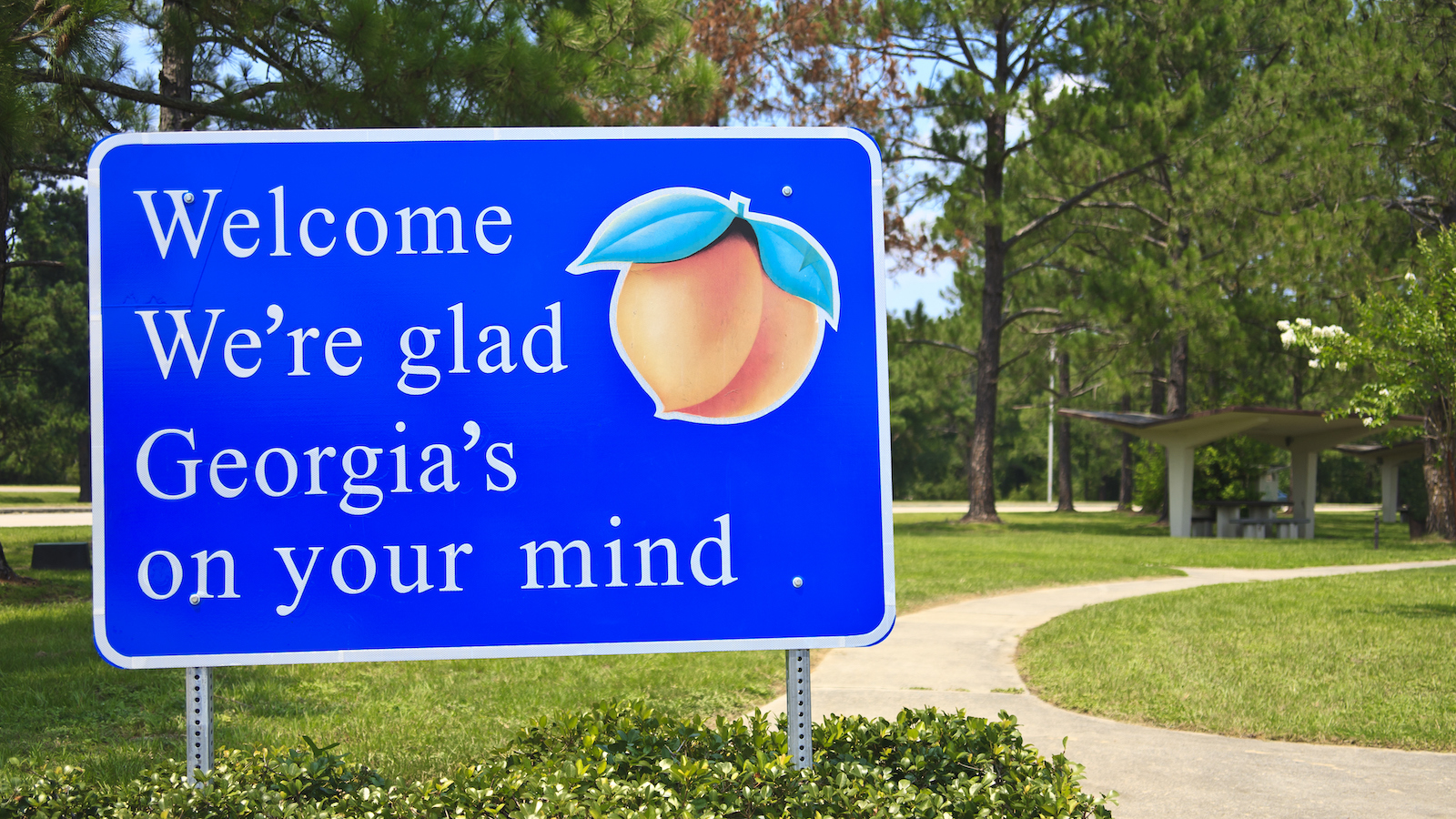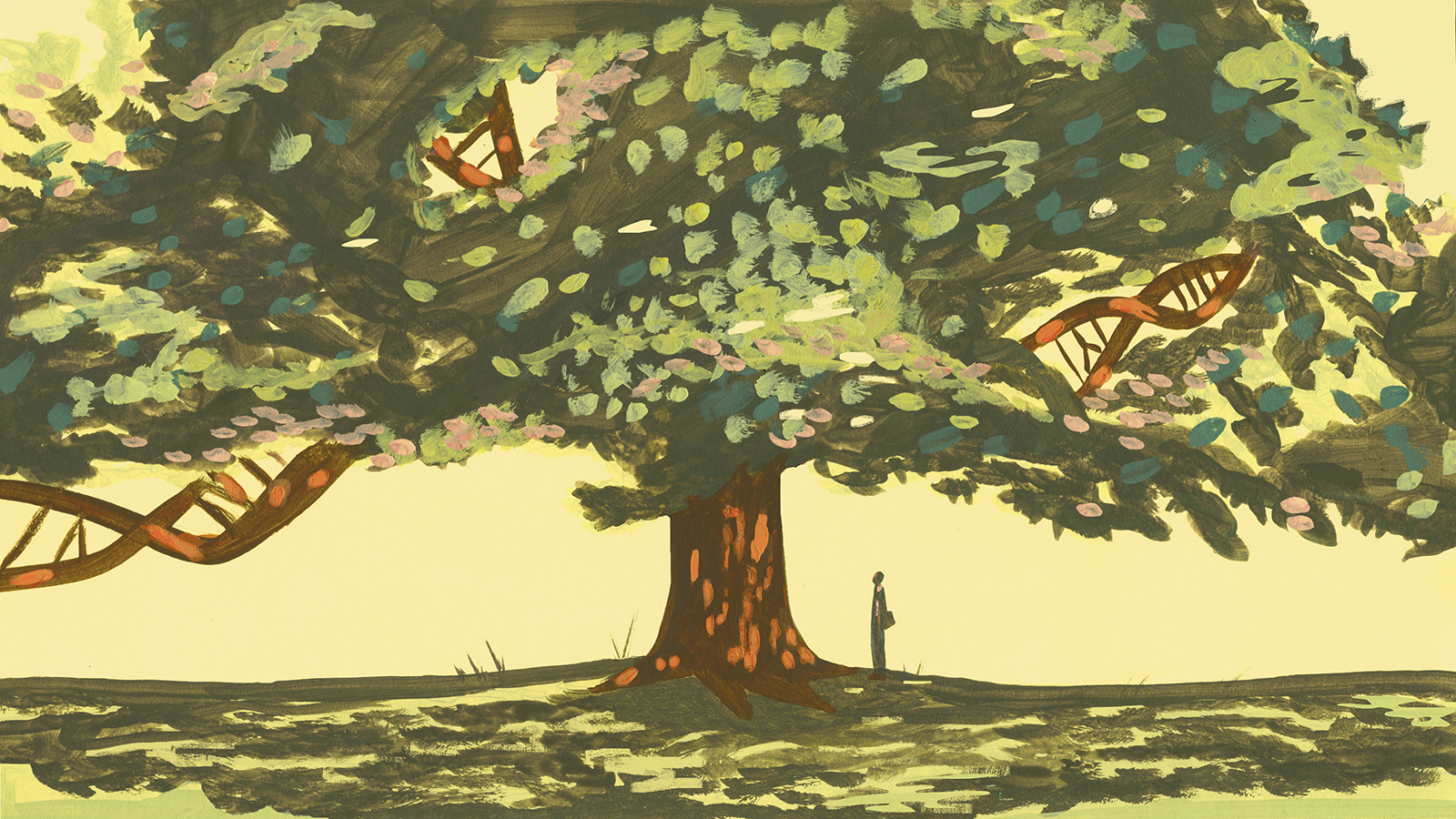It’s November and it’s unseasonably heat as John John Brown, a Muscogee elder, works to replant peach saplings. “I haven’t had a lot luck rising them from seed,” he says. The rationale, he thinks, is as a result of peaches want decrease temperatures.
Round him, tiny peach timber the scale of pencils stand above the browning grass beneath their mum or dad tree. Brown harvested round 200 peaches this 12 months from his small orchard – sufficient for his household and neighbors – however he had competitors: a fox has been poking round. “The animals know when the peaches are ripe faster than I do,” Brown laughs. “They begin coming in and stealing my peaches.”
Brown’s peaches aren’t your on a regular basis peaches, they’re heirlooms: direct descendants of peach seeds introduced throughout the continent on the Path of Tears. Brown calls them “Indian peaches” whereas different Muscogees name them “Path of Tears peaches”. There was little analysis on this specific selection, and it’s unknown simply what number of genes they share with business peaches. Whereas grocery retailer peaches are comfortable and fleshy, Indian peaches don’t get a lot larger than a lemon and are extraordinarily agency however candy.
The Indian peach is threatened by local weather change. The place hurricanes, flooding and better temperatures have large impacts on crops, together with peaches, across the nation, heirloom varieties, just like the Indian peach, are additionally threatened. This fruit, that crossed a planet, carried by merchants and vacationers, and ultimately by a couple of Muscogees alongside The Path earlier than they discovered a brand new residence exterior Sapulpa, Oklahoma, is a connection to a different time and place.
“One of many best items Creator gave me is these peaches and the flexibility to share these timber with our neighborhood and everybody,” Brown stated.
There are solely 50 Indian peach timber on the Muscogee reservation that Brown is aware of of – some develop in some peoples’ backyards, and a few at a neighborhood daycare – and between climate-driven modifications to rising cycles and excessive temperatures, they face a troublesome future. Fortunately, they’ve folks like Brown working to guard them.
Peach cultivation is believed to have begun round 8,000 years in the past within the Yangtze Valley in China. One of many first mentions of peaches in literature seems within the fictional novel Journey to the West, written in 1592, that describes peaches as a fruit that would grant longevity and “make a person’s age equal to that of Heaven and Earth, the solar and the moon.”
From China, peaches made their strategy to Europe, then, to the Americas within the 1600’s on Spanish ships – the start of a kind-of crop change between the continents: potatoes and tomatoes from South and Central America went to Europe whereas peaches made their strategy to the Georgia coast, and rapidly, into Indigenous diets.
“Indigenous folks have been already caring for and managing forests and other forms of tree meals,” stated Jacob Holland-Lulewicz at Pennsylvania State College who research archeology and ethnohistory. “That may have allowed them to undertake peaches tremendous rapidly and know rather well tips on how to create wholesome peaches.”
Inside a couple of a long time, and with the assistance of an unlimited community of commerce routes, peaches made their means throughout the continent, so far as the southwest, the place tribes just like the Navajo sun-dried and stewed them.
Round 1780, 1000’s of peach timber tended by the Seneca and Cayuga tribes alongside the Finger Lakes in western New York State, have been destroyed by President George Washington, in an try and ethnically cleanse Indigenous peoples from the area. Washington wrote in a letter to one in all his generals the aim was, “to put waste all of the settlements.” He added, “Will probably be important to destroy their crops now within the floor and forestall their planting extra.”
In 1830, President Andrew Jackson signed into regulation the Indian Elimination Act that led to the Path of Tears – a loss of life march that compelled round 60,000 Indigenous folks to depart their houses and transfer west, throughout the Mississippi River, to Oklahoma.
Vernon Courtwright grew up consuming Indian peaches. Now 75 years previous, the Muscogee elder and veteran says his household introduced Indian peach seeds and planted them once they have been performed strolling The Path. “That was the start of our life and the peaches’ life in Oklahoma,” he stated. When he was a baby, his grandmother, Emma Bruner, was the one who taught him about tips on how to develop and have a tendency to the fruit. “We grew up consuming these peaches.”
Courtwright says within the 1970’s he started to see Indian peaches disappear. With every passing 12 months, there was much less on the panorama. “I simply knew that our orchard needed to be taken care of,” he stated. When his grandparents handed, he took on the work of caring for the timber, and ultimately, met John John Brown who helped domesticate seeds and saplings to offer out to different Muscogees.
“It’s our legacy,” stated Courtwright. “It’s my household’s legacy to the tribe.”

Georgia, the Peach State, produces almost 25,000 tons of peaches yearly, however falls far behind California, which produces almost 475,000 tons every year. Globally, almost 24 million tons of peaches are grown every year with most coming from China.
Local weather change is having a huge impact on these numbers although. One of many largest threats to the peach business is rising temperatures. Peaches want “peach chill” – a sure period of time in temperatures which can be underneath 45 levels fahrenheit. With out satisfactory peach chill, peach timber gained’t produce, and with rising temperatures, blooms will sprout too early. In 2017, round 70 % of peach losses may very well be attributed to lack of peach chill. “Lack of chill is one thing that we expect goes to be the most important subject for us and our business,” stated Dario Chavez, a peach geneticist on the College of Georgia. “If you’re in a northern local weather, you don’t fear an excessive amount of in regards to the chill. However I believe they’re beginning to see the physiological responses to points with chill.”
Then there are excessive climate occasions supercharged by local weather change that may inflict instant, wide-spread harm. This 12 months, Hurricane Helene killed no less than 226 folks. It additionally devastated Georgia’s agricultural financial system to the tune of almost $6.5 billion {dollars}.
However Helene’s path was solely the start. Hurricanes carry flooding, which is particularly unhealthy for peaches – peach timber don’t wish to be too moist and might prematurely drop fruit if underneath water. They’re additionally vulnerable to ailments like brown rot which may be triggered after heavy storms.
For the Indian peach, peach chill and excessive climate aren’t as massive a menace as they’re within the south. Nonetheless, Oklahoma is anticipated to turn out to be round two and a half levels hotter within the subsequent twenty years. Although the peach is a resilient plant, peach chill will turn out to be a problem. Pure disasters like floods turn out to be extra of a menace to the lives and livelihoods of tribal members– tribal lands in Oklahoma are probably the most liable to flooding within the state.
However to guard Indian peaches, and a little bit a part of tribal historical past, John John Brown has been giving out saplings for the higher a part of a decade to anybody curious about rising them.

Brown usually travels to Georgia and Alabama to go to the proposed Ocmulgee Mounds Nationwide Park and Protect– situated on Muscogee homelands. On his drives, he typically passes peach orchards crammed with the range most People are used to. “You don’t assume they might have the ability to produce peaches,” he says as he eyes the tightly-pruned rows. “They reduce ‘em again actual small.”
He goes right down to the homelands to remind settlers within the space that the Muscogee survived regardless of the US makes an attempt at genocide and demos making canoes and bows the normal means out of native wooden through the annual Ocmulgee Indigenous Celebration. To Brown the peaches are a logo of resilience.
“When our ancestors introduced these peaches up from the south you concentrate on how devastating it was, to lose family members, and never know if the seeds will sprout,” he stated. “I do that to honor them, and their power.”





